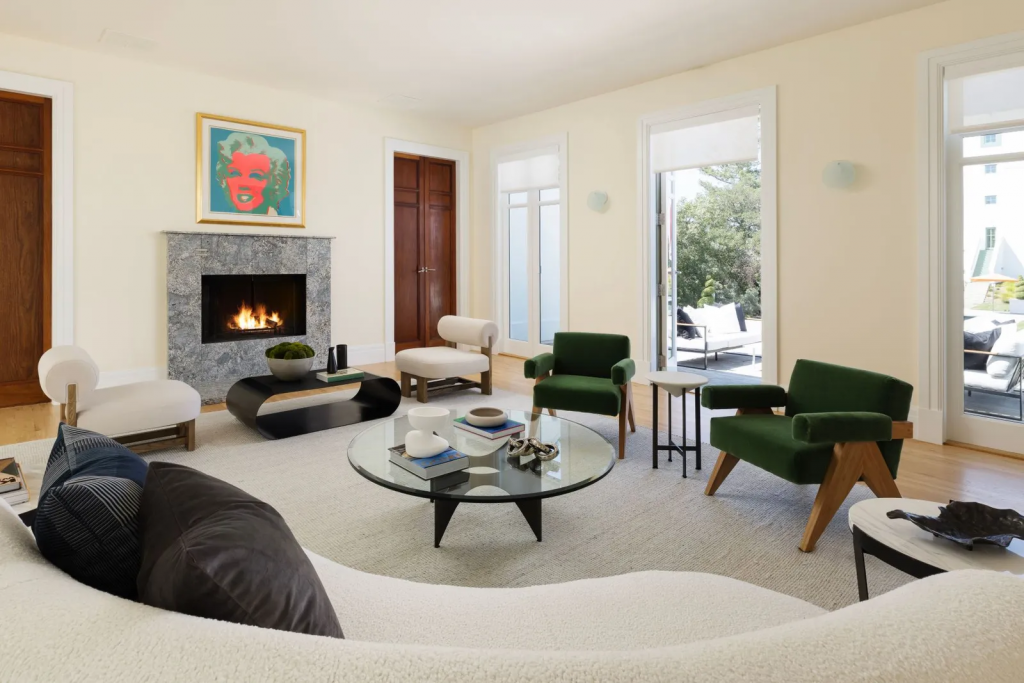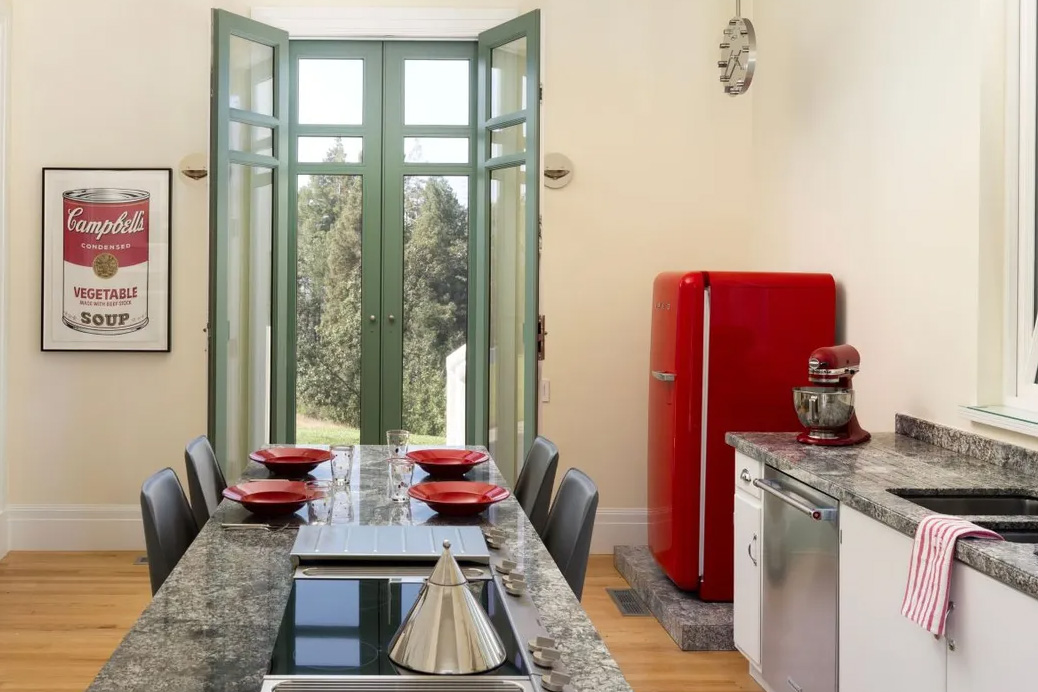
Arthur Goodrich and Federico Parlagreco – Sotheby’s International Realty – St. Helena Brokerage
An exceptional art collection may be eclectic, but it’s never disorderly; every piece is chosen because it holds personal significance, or dialogues compellingly with a certain space or place. That’s why if you have a private art collection—or aspire to amass one—knowing how to curate it in your home is so essential.
When done properly, your exhibition serves as elevated decor that enhances your property, while also showcasing your one-of-a-kind style and personality.
1. You Can Start with the Art

Arthur Goodrich and Federico Parlagreco – Sotheby’s International Realty – St. Helena Brokerage
ovide instant inspiration for the color, layout, and ambiance in the rest of the room.
In this hilltop villa in Napa—itself a masterpiece, with modernist, Art Deco, and deconstructivist influences—singular, iconic Warhols serve as visual touchstones for the spaces they inhabit.
2. Get Inspired by Galleries

Becky Fathemi – United Kingdom Sotheby’s International Realty
If your artwork doesn’t resonate with you, it’s time to start browsing. Though museums and galleries have immersive online catalogs, nothing compares to going in-person. This way, you can genuinely experience the presence and physicality of artworks, and see how they can be displayed and arranged.
Located in London’s affluent Mayfair district, this magnificent apartment boasts effortless access to some of the greatest art institutions and commercial galleries in the world, as attested by its vibrant collection. The Royal Academy of Arts and the Fine Art Society are nearby, and there are a variety of places where you can purchase—or even commission—a work that fits your vision and vibe.
3. Hang Like an Art Handler

Despina Laou – Greece Sotheby’s International Realty
When you’re ready to mount your artwork, there are some established guidelines that are helpful to follow. Typically, professional art preparators will hang works so that the center of the image is around five feet from the floor, which puts the piece approximately at eye level.
This holds true even for enormous works—like the statement pieces found in this stunning stone sanctuary perched on the Ionian coast—though if they cover most of the wall, ensure the lower edge of the frame is about a foot and a half from the ground.
4. Color Coordination is Key

Ann Brizolis – Pacific Sotheby’s International Realty
Whether a painting, sculpture, or photograph, it’s often assumed that a work of art should coordinate with the colors in its immediate surroundings. That’s not necessarily incorrect, but if the colors are a perfect match, that art will lose its majesty.
Instead, the shades, tones, and hues of the piece could tastefully contrast with the walls and furnishings. Or you can follow the example of this radiant estate in Rancho Santa Fe and pair a work with a setting that augments the complementary colors, without blending in.
5. Mapping the Dimensions

Jason Friedman and Sandy Binder – Daniel Gale Sotheby’s International Realty
While you may be able to swap out old furniture or paint your walls when curating your art collection, the architectural details and features of your home are important and unique, and deserve to be celebrated.
So when shopping for art, it helps to know the sizes of your home’s potential display surfaces, the heights of your ceilings, and the quality of light and shadow in different areas. That way, you can stage a show comparable to this Brookville mansion, which makes exceptional use of its available spaces to exhibit an unforgettable collection.
6. Protect Your Investments

Jane Zhang – Sotheby’s International Realty Canada
If you acquire high-quality art from a reputable artist and gallerist, and do your due diligence on its authenticity and paperwork, it’s bound to be a sound investment—though bear in mind that its value may grow over decades or generations. That’s why you should buy pieces because you adore them, and feel a powerful personal pull from them, and not because you’re hoping to sell them off later at an increased price.
It’s also why it’s important to safeguard these precious assets. As seen in this spectacular Toronto residence, it’s often prudent to shield paintings and photographs from direct natural light. They can also be framed with UV-proof and anti-reflective acrylic glass.
Curating art in the home is a labor of love—one that empowers you to explore and embrace the aesthetics that bring you joy and enliven your every day.
This article originally appeared at https://www.sothebysrealty.com/extraordinary-living-blog/the-art-of-curation-how-to-choose-and-display-fine-art


 Facebook
Facebook
 X
X
 Pinterest
Pinterest
 Copy Link
Copy Link


